Gardening at home is a pleasurable and relaxing pastime that brings nature into your house and provides fresh air. Whether you’re a beginner or an experienced gardener, there are simple ideas and practices to establish your own home garden and enjoy its numerous benefits. Home gardening can save money on groceries, make you more self-sufficient, and minimize your carbon footprint. Planning your garden layout, choosing the right location and soil, selecting suitable plants, planting them properly, and maintaining your garden are vital steps in making gardening easy.
In addition to these basic practices, there are various gardening hacks you can try to make your gardening experience more efficient, such as using eggshells as seed starters, creating your own fertilizer, using vinegar to kill weeds, and many more. By utilizing these tips and hacks, you can unlock your green thumb and enjoy the delight of growing your own plants, fruits, and veggies with minimal effort. Happy gardening!
Key Takeaways:
- Home gardening can save money on groceries and minimize your carbon footprint
- Planning your garden layout, choosing the right location and soil, selecting suitable plants, planting them properly, and maintaining your garden are vital steps in making gardening easy
- Gardening hacks such as using eggshells as seed starters and creating your own fertilizer can make gardening more efficient
Establishing Your Home Garden
Creating a home garden doesn’t have to be complicated – with a few simple gardening hacks and efficient methods, you can establish a beginner-friendly garden that brings beauty and bounty to your home. Gardening can be a relaxing and rewarding experience that benefits both your physical and emotional well-being. By planning and setting up your garden properly, you can save money on groceries and become more self-sufficient.
To start, consider the layout and location of your garden. Choose a spot that receives plenty of sunlight and has access to water. If you’re short on space, you can opt for container gardening or vertical gardening, which can save space and still provide plenty of plants. Consider the types of plants you want to grow, such as tomatoes, peppers, squash, lettuce, and herbs. These are all easy-to-grow options that are perfect for beginners.
When selecting soil, look for a good quality, organic soil that is nutrient-rich and well-draining. You can also enrich your soil with compost or fertilizer to provide additional nutrients for your plants.
One simple gardening hack is to use companion planting, which is the practice of planting complementary plants together to help them grow. For example, pairing tomatoes with basil can help improve the flavor of both plants and repel pests. Another hack is to use a DIY drip irrigation system, which can save time and water by providing a consistent watering schedule.
By following these tips and using creative gardening hacks, you can establish a thriving home garden that provides fresh produce and a sense of accomplishment. With a little effort and patience, you can enjoy the many benefits of gardening in the comfort of your own home.
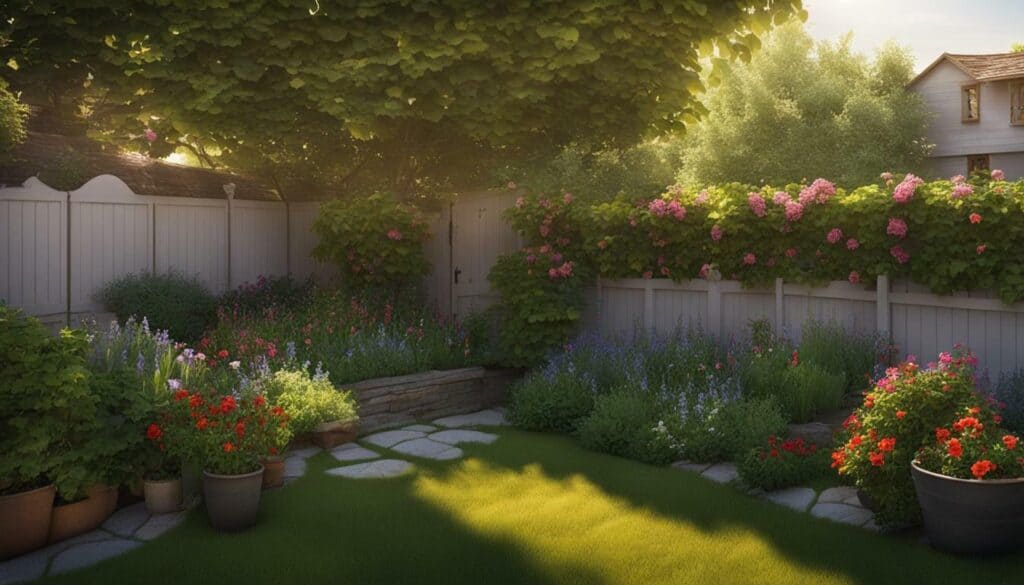
Selecting the Right Location and Soil
The success of your garden begins with selecting the right location and ensuring you have nutrient-rich, well-drained soil. When planning your garden layout, consider factors like plant selection, garden size, sunlight, and water requirements. Choosing a location that receives ample water and sunlight is important, but accessibility is also a key factor. You don’t want to have to trek across your entire yard to tend to your garden regularly.
Additionally, the soil plays a significant role in the success of your garden, so it is recommended to use nutrient-rich, well-drained soil obtained from a local nursery or garden center. The right soil can provide the necessary nutrients and drainage for plants to thrive. Different plants may require specialized soil, so research is essential before making any purchases.
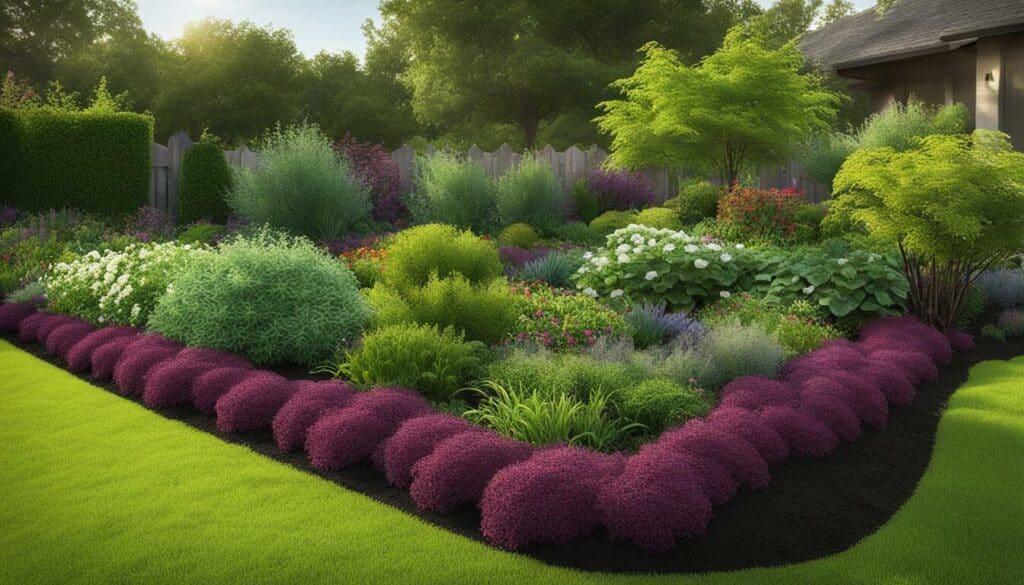
By carefully selecting the location and soil, gardeners can set themselves up for a successful and enjoyable gardening experience. Efficient gardening methods, like planting the right plants and spacing them correctly, can also help maximize the potential of your garden. Stay tuned for more gardening tips and easy gardening techniques in the upcoming sections of this article!
Choosing the Right Plants
To make gardening easy and enjoyable, consider selecting plants that are well-suited for your region and require minimal care. If you’re a beginner, it’s recommended to start with plants that are easy to grow and maintain. Some popular options include tomatoes, peppers, squash, lettuce, herbs, flowers, fruits, and vegetables.
When choosing your plants, it’s important to consider the size of your garden and the amount of sunlight and water it receives. Some plants require more sunlight than others, while some require less water. It’s also important to consider the type of soil you have and choose plants that are well-suited for it.
Once you have selected your plants, it’s time to start planting. Adequate spacing and well-drained soil are important factors to consider. Be sure to follow the recommended spacing guidelines for each plant to ensure they have enough room to grow. It’s also important to plant them at the correct depth, which is usually listed on the plant label or seed packet.
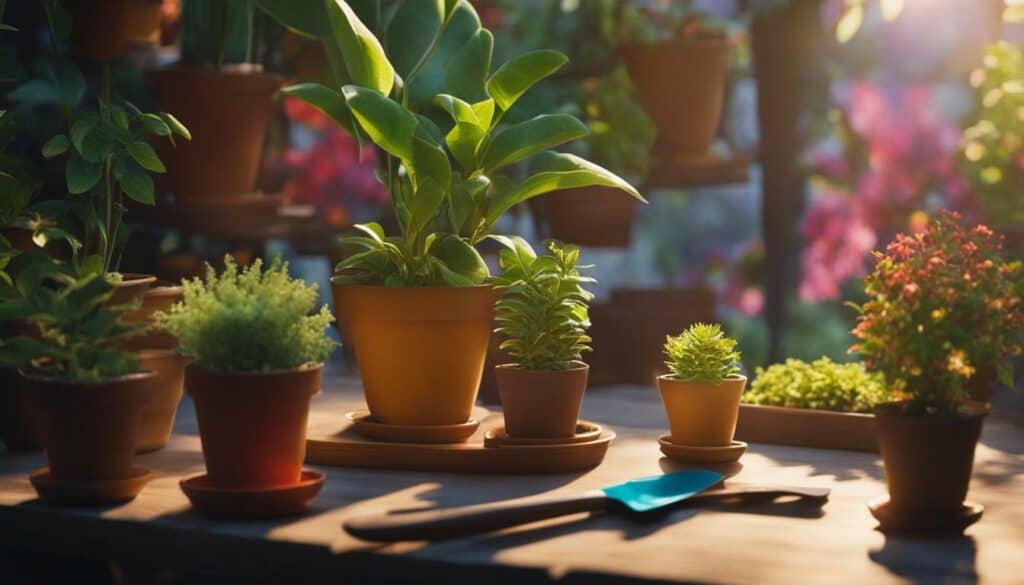
Maintaining your garden is crucial to keeping your plants healthy and thriving. You’ll need to water, prune, weed, and fertilize your plants regularly to ensure they’re getting the nutrients they need. If you’re short on time, consider using simple gardening hacks like mulching to help retain moisture and keep weeds at bay.
Harvesting your garden is a rewarding experience, but it’s important to do it at the right time. Check the plant label or seed packet to see when the plant is ready to be harvested. Some plants, like tomatoes and peppers, will continue to ripen even after they’re picked.
Planting and Spacing
Once you’ve chosen your plants, it’s essential to plant them properly and provide adequate spacing for their growth. Before planting, it is important to prepare the soil by removing any weeds and debris and adding compost or fertilizer to promote healthy plant growth. When planting, make sure to read the instructions on the seed packets to determine the proper depth and spacing for each plant.
A common mistake for beginners is overcrowding the garden by planting too many plants in a small space. This can lead to stunted growth, poor yield, and increased susceptibility to pests and diseases. To ensure your plants have enough room to grow, leave enough space between each plant based on their mature size. A general rule of thumb is to leave at least 6 inches of space between small plants and up to 2 feet for larger plants like tomatoes and peppers.
Spacing can also vary based on the type of plant and the growth habit. For example, plants that spread outwards like cucumbers and squash require more space than plants that grow upwards like beans and peas. Additionally, consider the direction of the sun and plant taller plants towards the back of the garden to prevent shading of smaller plants.
Once you have planted your garden, it is important to water your plants regularly to keep the soil moist. To prevent overwatering and underwatering, it is recommended to water your plants deeply and less often, rather than a little bit every day. This will encourage deeper root growth and help your plants withstand dry periods.
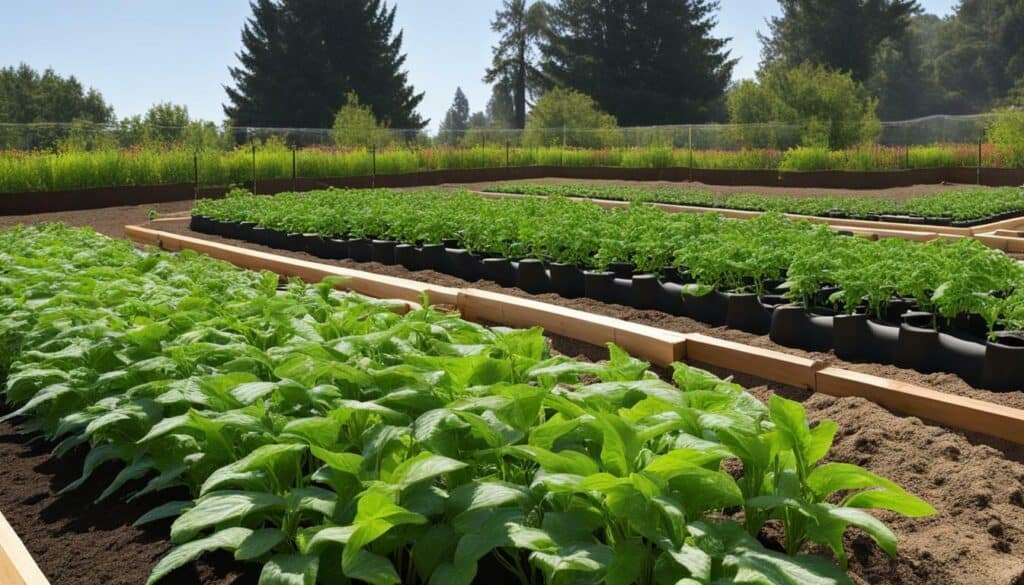
Proper planting and spacing are crucial to the success of your home garden. With a little planning and care, you’ll be on your way to growing a bountiful harvest of fresh fruits, vegetables, and flowers!
Maintaining Your Garden
Maintaining your garden doesn’t have to be a chore – with a few simple gardening tips and techniques, you can easily keep your plants happy and thriving. One of the most important things to remember when maintaining your garden is to water your plants regularly. This can be done manually with a watering can or hose, or you can install an irrigation system to make the process even easier.
Weeding is another crucial aspect of maintaining your garden. Weeds can steal nutrients and water from your plants, so it’s important to remove them as soon as possible. You can do this either by hand or with a hoe, depending on the size of your garden and the number of weeds present.
Pruning is also important to ensure that your plants are growing properly. This involves removing dead or damaged branches, as well as shaping the plant to your desired size and form. Regular pruning can also promote the growth of new buds, which can lead to more blooms and fruit.
Fertilizing your plants is another essential task in maintaining your garden. There are many different types of fertilizers available, but you can also create your own using simple household items. For example, Epsom salt, coffee grounds, and banana peels can all be used to create a natural, effective fertilizer.
Aside from these maintenance tasks, there are also several simple gardening hacks that can make your life easier. One such hack is using eggshells as seed starters. Simply crack an egg, rinse out the shell, fill it with soil, and plant your seed inside. The shell will eventually break down and provide nutrients to your growing plant.
Another hack is using vinegar to kill weeds. Simply spray vinegar directly onto the weed, making sure to avoid any nearby plants. Within a few days, the weed should wither and die.
Other hacks involve using everyday items like wine bottles, muffin tins, and shower caddies. For example, wine bottles can be filled with water and used as a slow-release watering system, while muffin tins can be used to start seedlings. Shower caddies can also be used to hold small plants or gardening tools.
By incorporating these maintenance tasks and gardening hacks into your routine, you can ensure that your garden remains healthy and thriving. Not only will this give you a sense of accomplishment, but you’ll also be able to enjoy the fruits (and vegetables) of your labor.
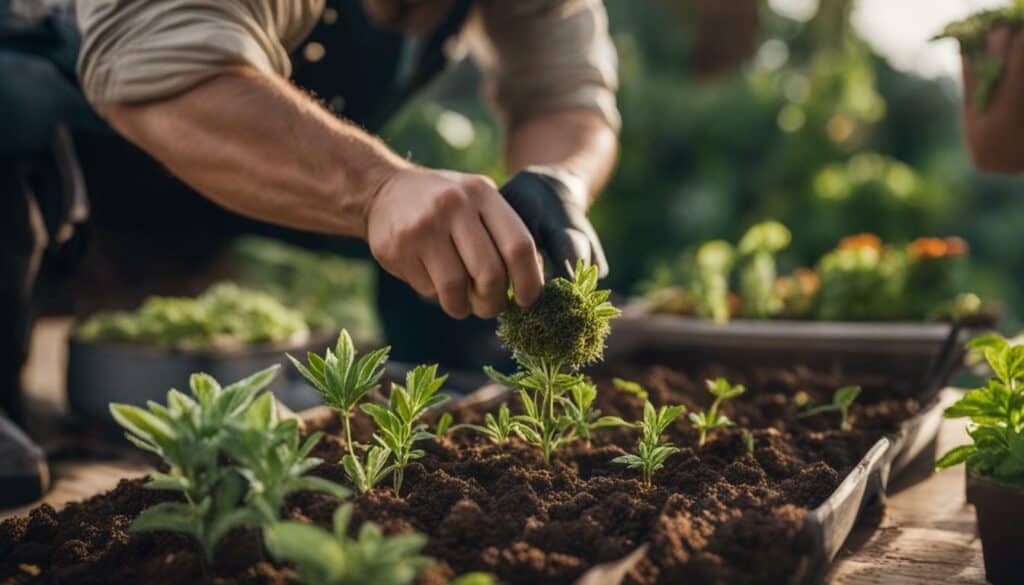
Harvesting Your Garden
One of the joys of gardening is reaping the rewards of your hard work. Harvesting your plants at the right time is crucial for quality and taste. Some plants like tomatoes and beans need to be harvested regularly to promote new growth, while others such as carrots and beets can be left in the ground until needed.
Before harvesting, it is important to maintain your garden by watering, weeding, and pruning the plants regularly. Ensure that you follow best practices such as only harvesting dry plants, avoiding stepping on soil beds, and using clean tools to prevent the spread of disease.
When deciding if a plant is ready to be harvested, look for visual cues such as ripe color and size, and test the texture of the fruit or vegetable. For example, ripe tomatoes should give slightly when squeezed, while ripe peppers should have a firm skin.
Remember to plan and organize your garden properly before planting to ensure the success of your plants. Consider the size of your garden, amount of sunlight and water it receives, and spacing between plants. Popular plants to grow in a home garden include tomatoes, peppers, squash, lettuce, herbs, flowers, fruits, and vegetables.
Harvesting your own homegrown produce not only saves money on groceries but also contributes to self-sufficiency and reduces carbon footprints. Additionally, incorporating gardening into your routine can provide physical and emotional well-being, exercise, stress relief, and fresh air.
So, when the time comes to pick your crops, savor the satisfaction of your hard work, and enjoy the delicious fruits (and vegetables) of your labor!
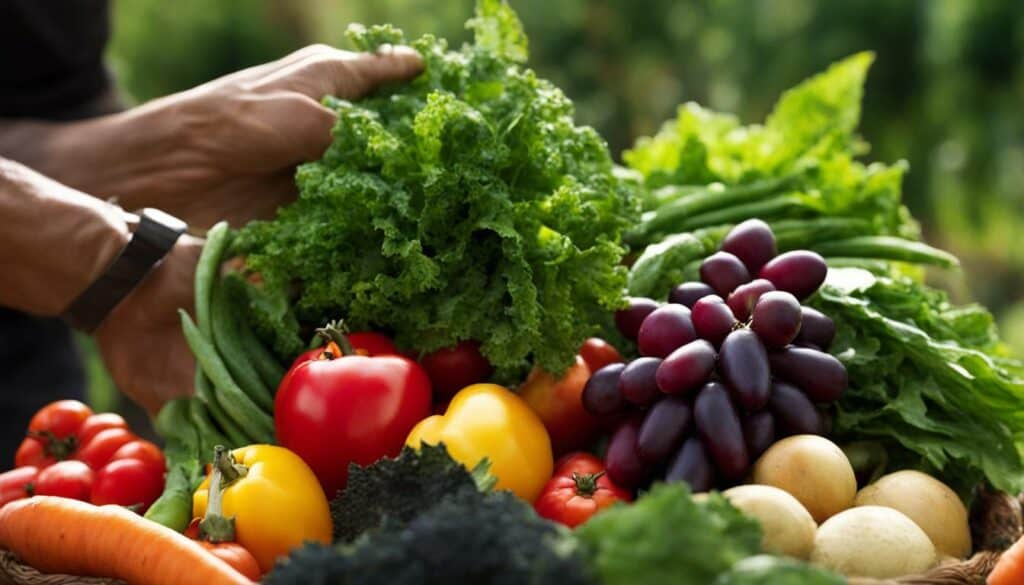
Easy Gardening Hacks
Discover these easy gardening hacks that will save you time and effort while maximizing the potential of your garden. These hacks are perfect for those who want to save money, repurpose everyday items, and enhance plant growth. Here are some of the most popular easy gardening hacks:
| Hack | Description |
|---|---|
| Banana Peel Fertilizer | Instead of throwing away banana peels, use them to fertilize your plants. Banana peels are rich in potassium, phosphorus, and calcium, which are all essential for plant growth. Simply chop up the peels and bury them in the soil near the roots of your plants. |
| Household Item Seed Starters and Watering Tools | Repurpose household items like eggshells, wine bottles, and even soda bottles as seed starters and watering tools. For example, cut off the top of a wine bottle and use it as a watering globe for your plants. |
| Homemade Fertilizers | Create homemade fertilizers using Epsom salt, coffee grounds, and banana peels. Dilute a tablespoon of Epsom salt in a gallon of water and use it as a fertilizer for your plants. Mix used coffee grounds with the soil to add nitrogen and potassium. Use blended banana peels mixed with water as a liquid fertilizer. |
| Cinnamon as a Fungal Disease Preventative | Sprinkle cinnamon powder on the soil to prevent fungal diseases like damping-off. Cinnamon has antifungal properties that can protect your plants. |
Other easy gardening hacks include using pantyhose for plant support, shower caps for frost protection, and ladders for trellises. You can also create raised garden beds using cinder blocks or use shower caddies to organize your garden tools. To prevent weeds, lay down cardboard and cover it with vinegar.
With these easy gardening hacks, both beginner and experienced gardeners can achieve successful and efficient gardens.
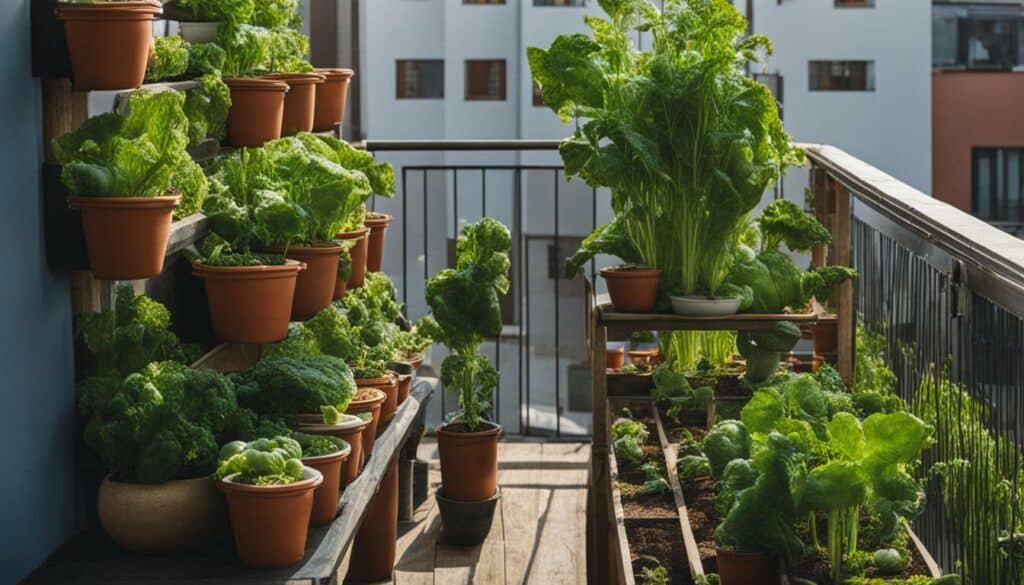
Protecting Yourself and Enhancing Your Garden
Gardening should be enjoyable and stress-free – use these tips to protect yourself and enhance your garden with clever solutions. To start with, protect your skin from the sun by wearing a hat and applying sunscreen, and use gloves to safeguard your hands from blisters and thorns.
When it comes to pest control, try using natural solutions instead of harsh chemicals. Sprinkle cayenne pepper around your plants to deter squirrels, rabbits, and other rodents. Companion planting can also be an effective way to control pests. Planting mint, for example, can help to repel ants, while planting garlic can ward off aphids.
Enhance your garden’s aesthetics by repurposing items that you already have around the house. Wine bottles make great planters when placed upside down, while eggshells can be used as biodegradable seedling starters. Muffin tins can be used to create a neat and organized planting system for herbs or small plants.
Lasagna Gardening
If you’re looking for a clever way to prevent weeds, consider adopting the lasagna gardening technique. Start by laying down a layer of cardboard or newspaper, followed by a layer of soil, compost, and organic matter. Continue layering in this fashion until the desired height is reached. This method requires no tilling and is an eco-friendly way to reduce weeds while improving soil health.
Another hack to keep in mind is using bananas as a natural fertilizer. Banana peels are a rich source of potassium and other important minerals that plants need to grow. Simply chop up your banana peels and add them to your garden soil before planting.
Liquid lime or bleach can be used to kill moss on garden paths, patios, and other hard surfaces. Moss grows in shady and damp areas, so try to limit the amount of moisture and sunlight by removing any debris or overhanging branches nearby.
Planting milkweed is an excellent way to control pests like aphids and encourage pollination among your flowers. Milkweed provides a food source for monarch butterflies and other pollinators. Additionally, green tea can be used to fertilize raspberry bushes, which thrive on nitrogen and benefit from the tea’s natural nutrients.
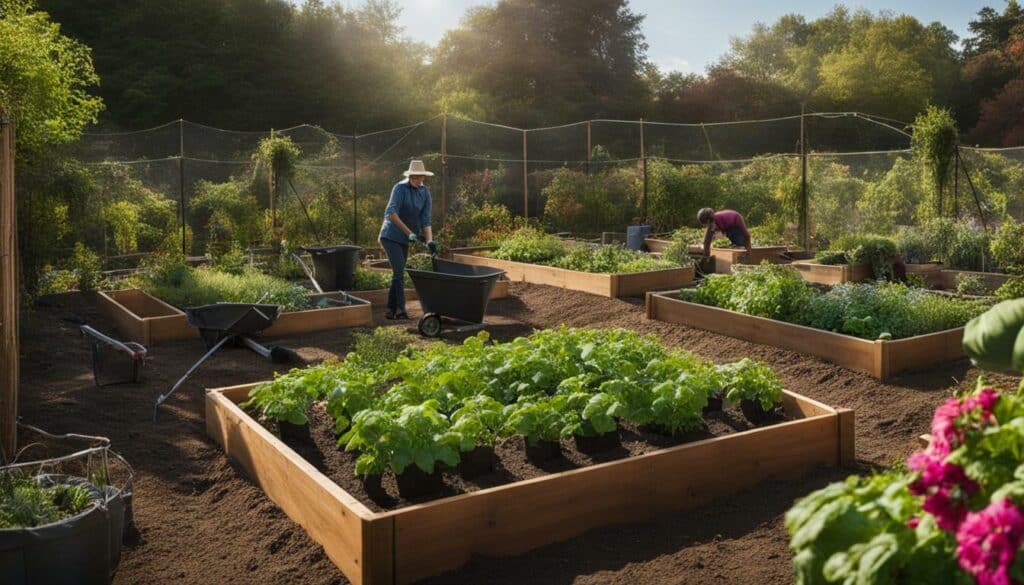
By incorporating these clever hacks and gardening tips into your routine, you can protect yourself and your garden while maximizing your yield and having fun in the process.
Conclusion
Incorporating these easy gardening techniques into your practice will transform even the most inexperienced gardener into a green thumb expert. Gardening at home is a wonderful way to bring nature into your home and enjoy fresh air. You can save money on groceries, become more self-sufficient, and reduce your carbon footprint by establishing your own home garden.
To get started, plan your garden layout, choose the appropriate soil, select easy-to-grow plants, and maintain your garden properly. Follow our simple gardening hacks to make your journey easier and more successful. For example, use banana peels as a natural fertilizer, implement lasagna gardening techniques, or repurpose an old shower caddy for your gardening tools.
Whether you’re a beginner or an experienced gardener, there’s no better time to start your own home garden and experience the joy of growing your own plants, fruits, and veggies. So, get your hands dirty and enjoy the satisfying rewards of home gardening. Happy gardening!
FAQ
Q: What are the benefits of home gardening?
A: Home gardening saves money on groceries, promotes self-sufficiency, reduces your carbon footprint, and promotes physical and emotional well-being.
Q: How do I plan and set up my home garden?
A: Start by choosing the right location and soil, then select the plants you want to grow. Make sure to plant them with adequate spacing and proper soil drainage.
Q: What are some popular plants for a home garden?
A: Popular plants include tomatoes, peppers, squash, lettuce, herbs, flowers, fruits, and vegetables.
Q: How do I properly plant and space my garden?
A: Follow step-by-step instructions to plant your garden and ensure proper spacing for optimal growth.
Q: How do I maintain my garden?
A: Maintain your garden by watering, weeding, pruning, and fertilizing the plants regularly.
Q: When should I harvest my garden?
A: Harvest your garden when the plants are ready, as indicated by their growth and ripeness.
Q: What are some easy gardening hacks?
A: Use banana peel water to feed plants, kill moss with bleach or liquid lime, and plant milkweed to attract pollinators and repel pests.
Q: How can I protect myself and enhance my garden?
A: Use a pool noodle for your knees, create a trellis with a ladder, and prevent fungal diseases with cinnamon. You can also use pantyhose to tie up plants and implement a drip irrigation system with a soda bottle.
Q: What is the importance of easy gardening techniques?
A: Easy gardening techniques make gardening more enjoyable and accessible to everyone, allowing you to create a thriving home garden without unnecessary stress or difficulties.
What Are Some Easy Tips for Beginner Gardeners?
Beginner gardeners can explore the basics of horticulture to ensure a successful gardening experience. Start by selecting easy-to-grow plants and understanding their sunlight and watering needs. Prioritize good soil preparation and consider container gardening for limited space. Regular watering, proper pruning, and protection from pests are also crucial. Learning from experienced gardeners, joining online forums, and attending workshops can provide valuable insights for beginners.
Source Links
- https://uyirorganic.farm/gardening-at-home/
- https://www.housedigest.com/1306632/garden-hacks-instant-green-thumb/
- https://www.daisycreekfarms.com/blog/20-gardening-hacks-to-make-your-green-thumb-life-easier
- https://www.acorn-gardening.co.uk/landscaping-equipment/top-must-have-gardening-tools-for-ultimate-success/
- https://www.amazon.com/Organic-Gardening-unlock-green-thumb/dp/B08CP93DCZ
- https://www.thespruce.com/how-to-start-a-garden-from-scratch-2132778
- https://growinginthegarden.com/gardening-for-beginners-how-to-start-a-garden-in-8-simple-steps/
- https://commonsensehome.com/start-a-garden/
- https://sebsnjaesnews.rutgers.edu/2020/04/choosing-the-right-location-for-your-vegetable-garden/
- https://www.gardensthatmatter.com/choose-garden-location/
- https://hort.extension.wisc.edu/articles/beginning-vegetable-garden-basics-site-selection-and-soil-preparation/
- https://www.provenwinners.com/learn/right-plant-right-place
- https://www.wikihow.life/Choose-Plants-for-a-Garden
- https://www.gardenersoasis.com/pick-the-right-plants/
- https://www.almanac.com/vegetable-gardening-for-beginners
- https://shiftingroots.com/how-to-space-your-vegetable-garden/
- https://www.bhg.com/gardening/yard/garden-care/ten-steps-to-beginning-a-garden/
- https://simplysmartgardening.com/low-maintenance-gardening/
- https://www.bhg.com/gardening/yard/garden-care/gardening-tips-for-every-gardener/
- https://www.planetnatural.com/organic-gardening-guru/garden-harvest/
- https://www.gardensalive.com/product/first-time-veggie-gardenwhere-to-start
- https://www.gardeningknowhow.com/edible/vegetables/vgen/harvesting-for-beginners.htm
- https://www.familyhandyman.com/list/genius-gardening-hacks/
- https://www.bobvila.com/slideshow/19-zero-dollar-garden-hacks-48855
- https://thekrazycouponlady.com/tips/at-home/18-genius-gardening-hacks-youll-regret-not-knowing
- https://www.finegardening.com/article/10-ways-to-keep-your-garden-healthy
- https://www.idealhome.co.uk/garden/garden-ideas/easy-garden-ideas-202397
- https://extension.unr.edu/publication.aspx?PubID=3180
- https://www.betterhealth.vic.gov.au/health/healthyliving/gardening-for-children

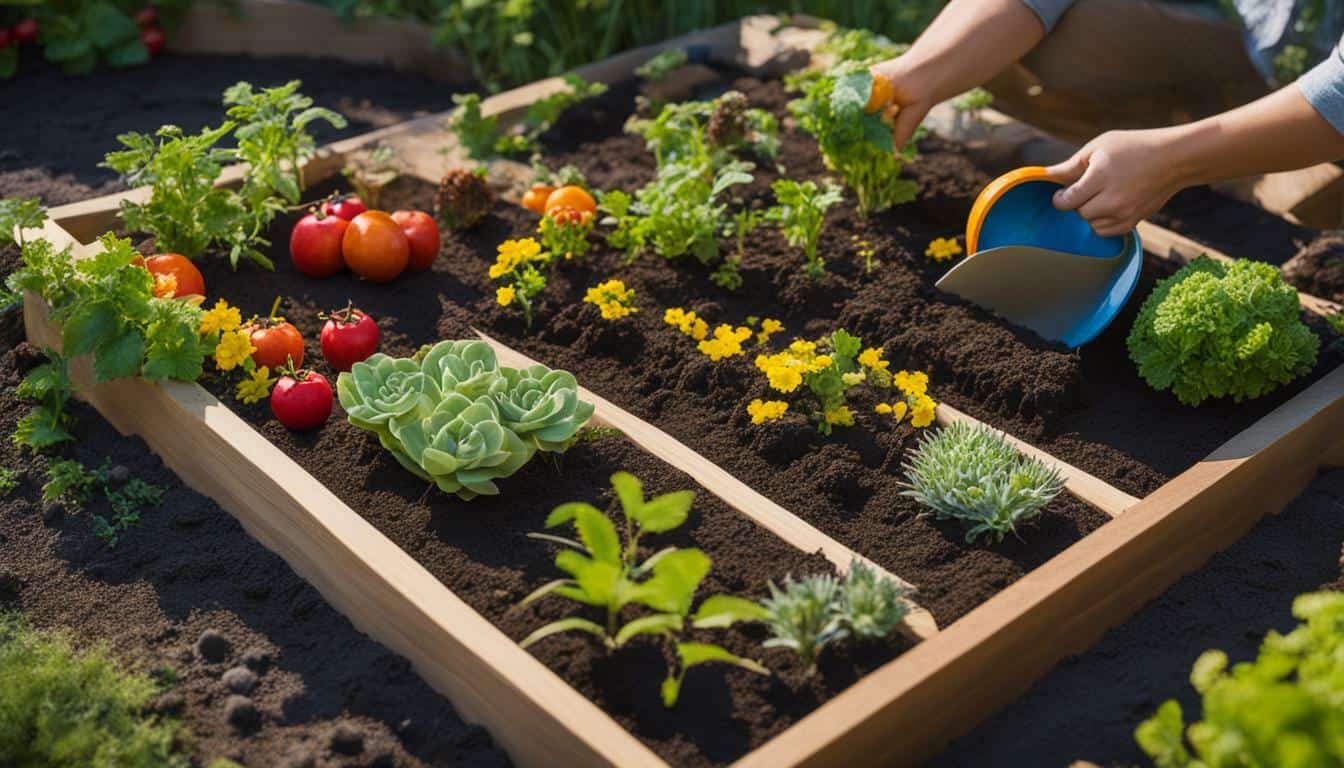



Leave a Reply